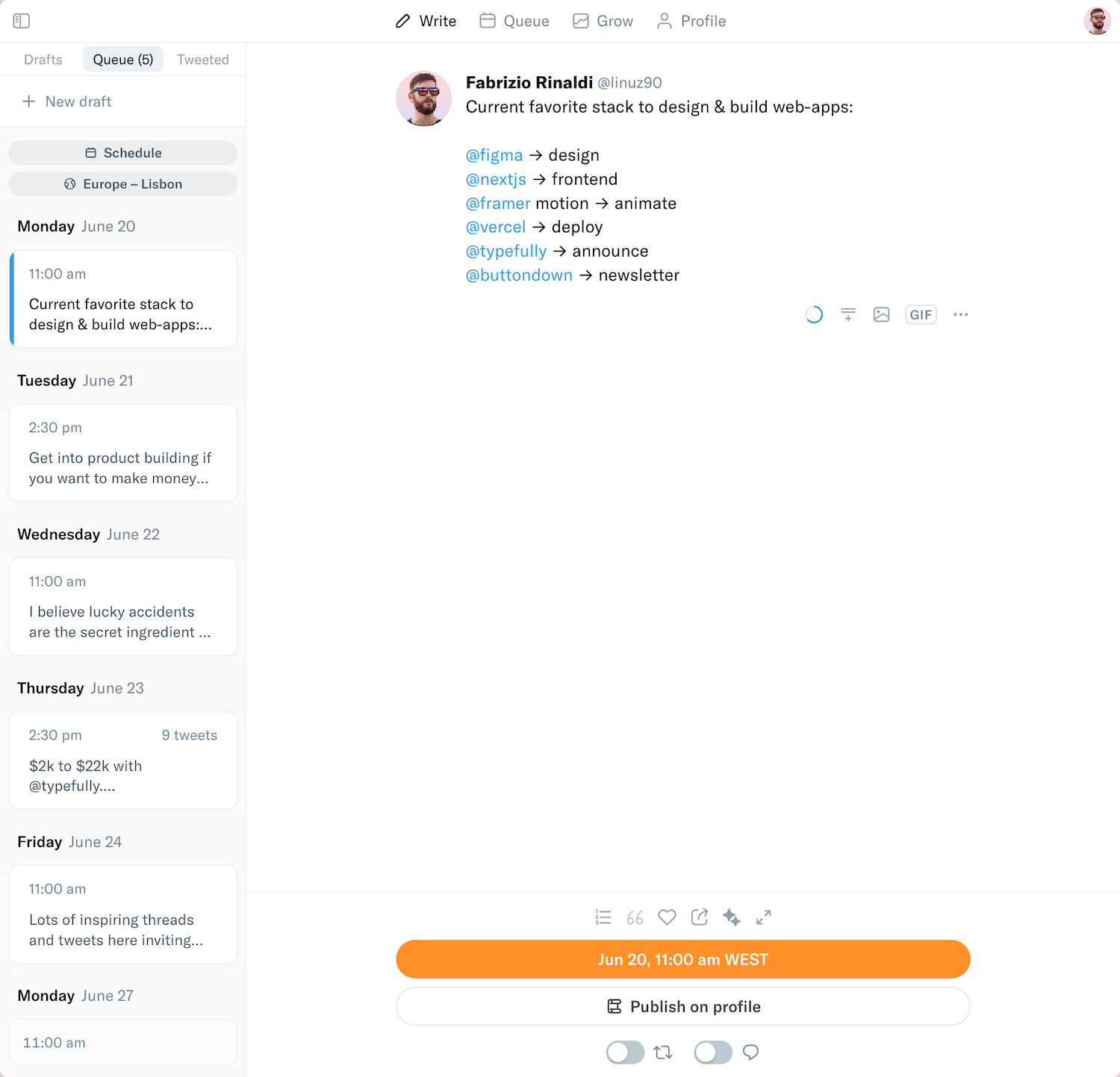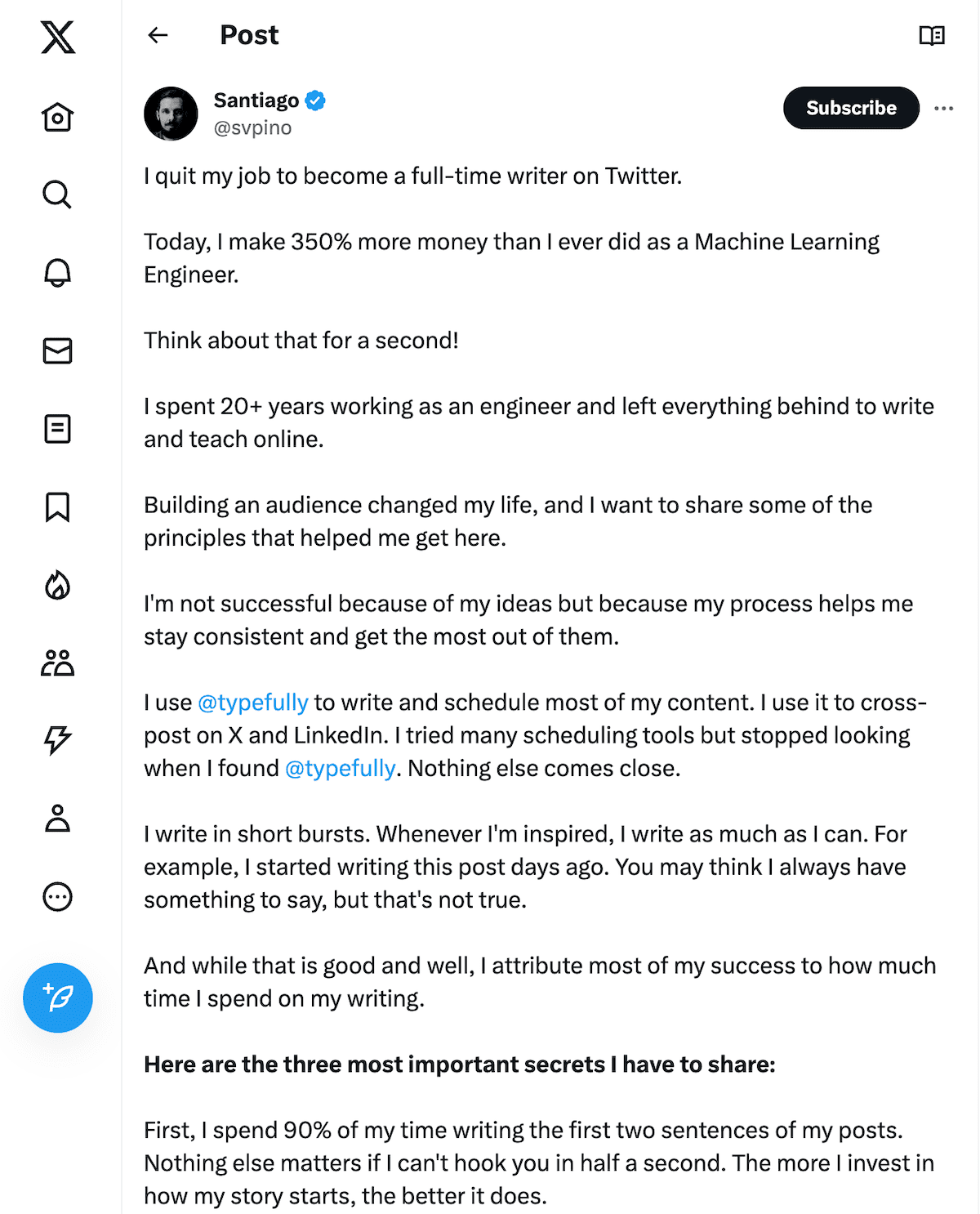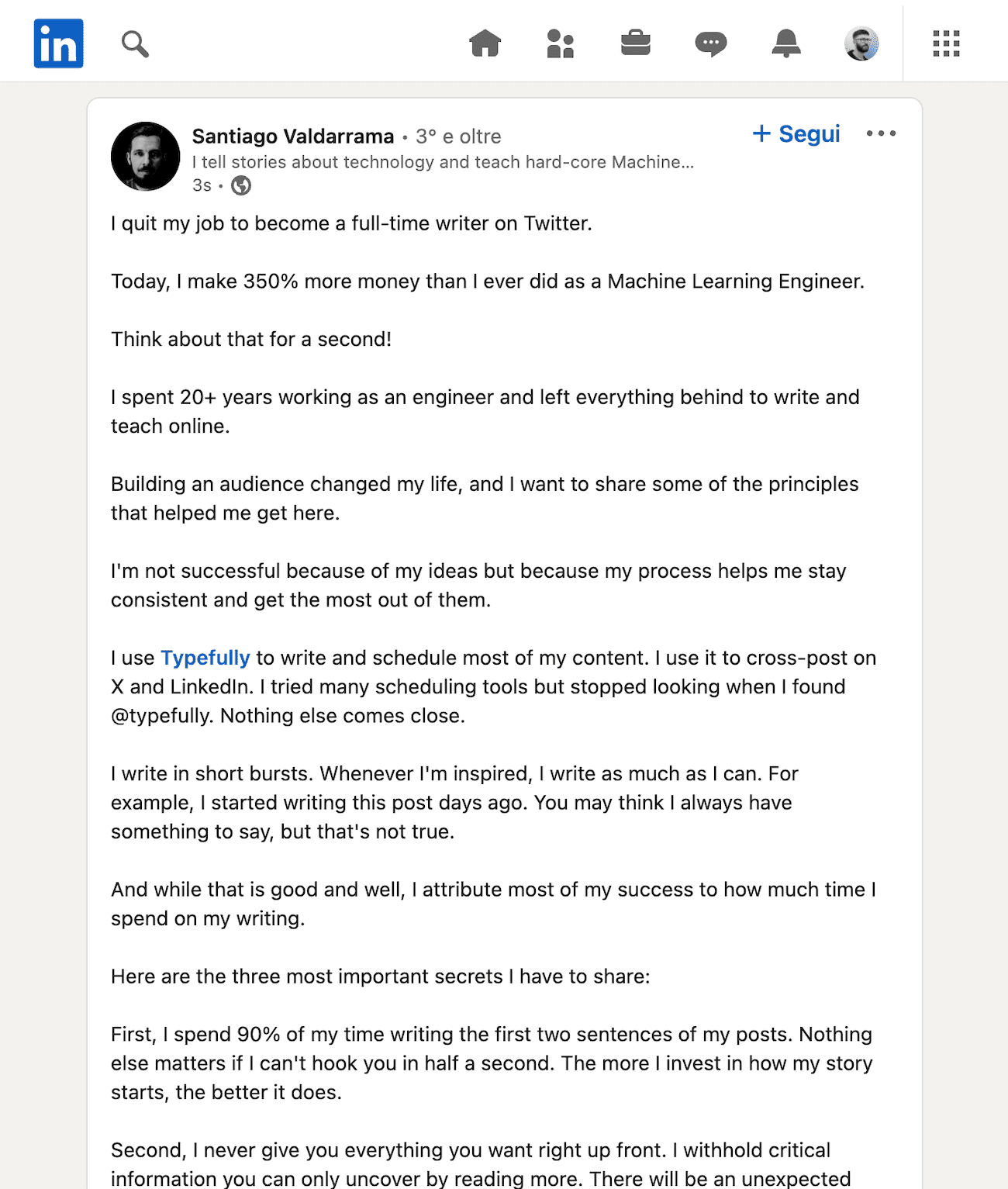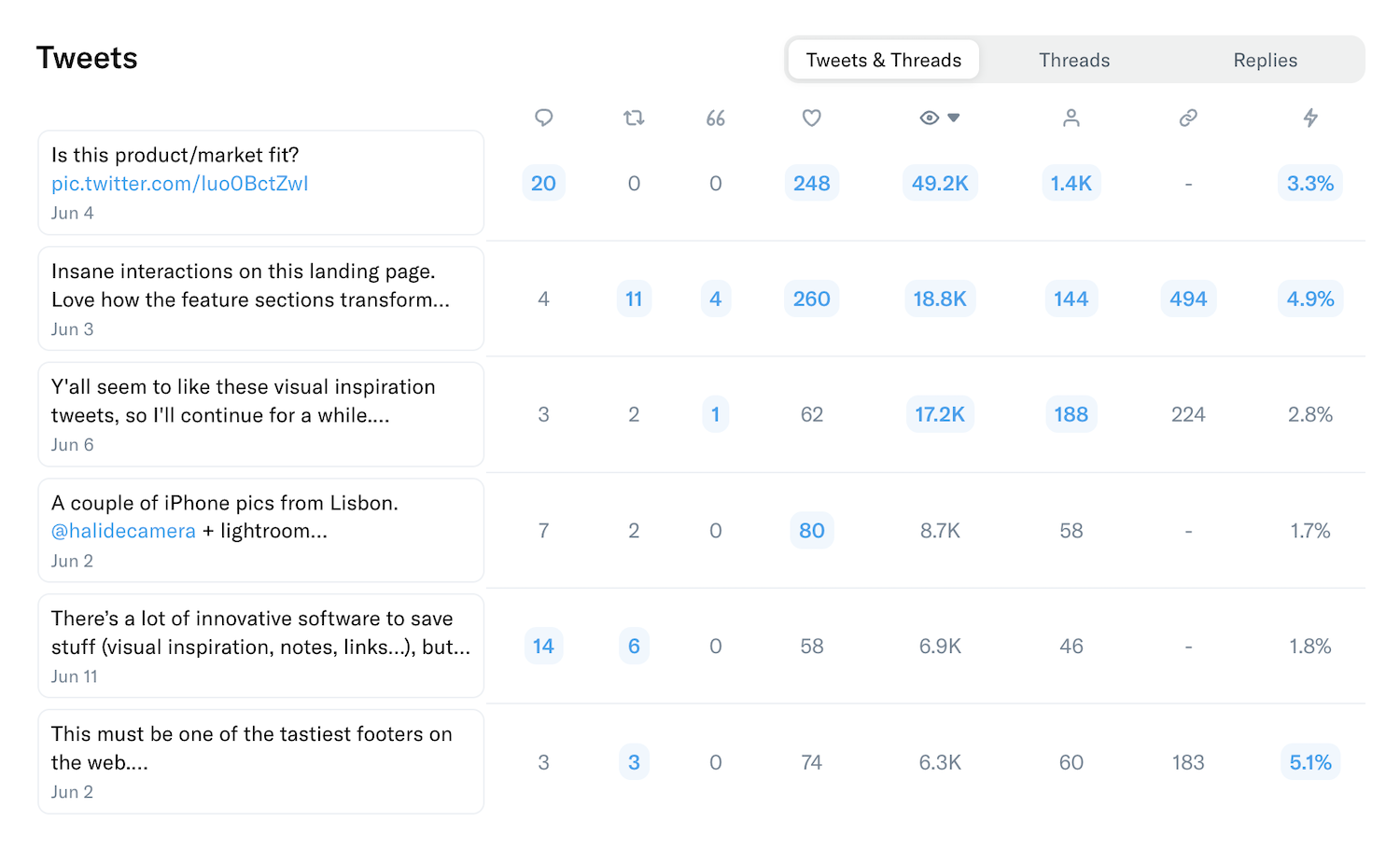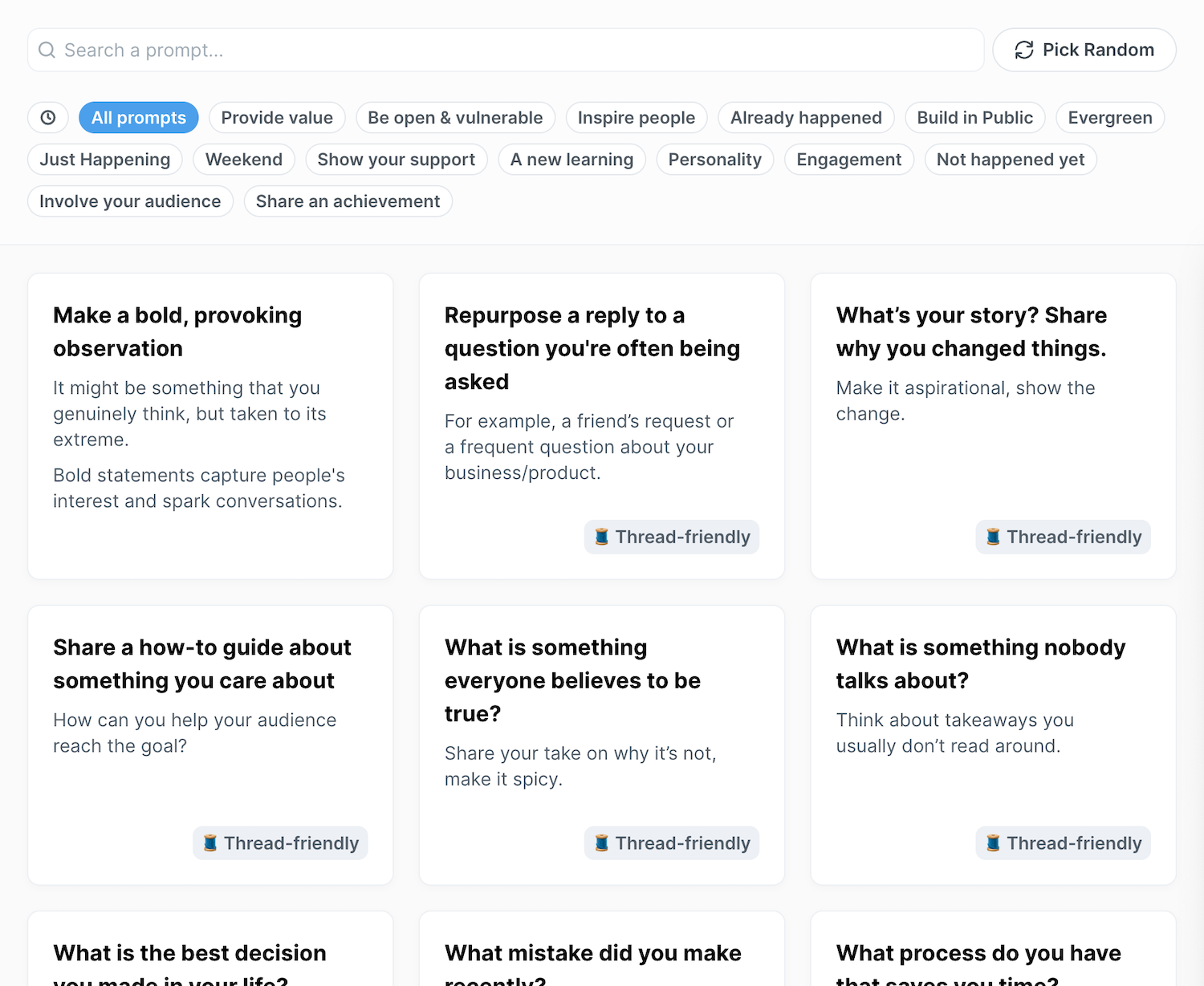In 2017 I landed my first brand deal on my YouTube channel.
Since then I've made:
- $1.2M+ in sponsorship income
- 150 sponsored videos
Here are 7 must-know concepts for landing brand deals and maximizing your income.
An entire business course in a single Twitter thread:
🧵
Here's what you'll learn:
- How to get brand deals (even if your channel is small)
- How to keep brands coming back (sustainable income)
- How to increase your sponsor rate
- How brand deals are REALLY priced behind the scenes
- How to not get screwed (unlike most creators)
1) It's Not About Views
Most YouTubers think "more views = more money".
But it's not that simple. Here's why:
Brands don't sponsor you because they want views.
They want what those views LEAD TO: 💰 Money! 💰
Brands look at you as a marketing channel, and not all marketing channels perform the same.
- Video A gets 10M views but only sends 50 sales
- Video B gets only 200K views but sends 100 sales - 2x the value!
The views don't matter.
Want proof? Let's look at the data.
One of my sponsors used to use short-links with publicly-viewable click numbers.
So I tracked the CTR (clickthrough rate) for all my videos. Look at these two:
83,000 views ⮕ 622 clicks
38,000 views ⮕ 1,300 clicks
P.S. - I got paid $9,000 for each of these videos.
My résumé video had less than half the views...
...but sent more than DOUBLE the clicks to my sponsor. The CTR was over 4x higher!
If you read my thread on funnels, you'll know that improvements at every stage of the funnel lead to more $$$ overall:
twitter.com/TomFrankly/status/1537161742324748288
Here's another example to drive the point home:
This video on my @NotionHQ channel only has 100k views, but has driven over $65,000 in sales.
That equates to a $650 CPM - very different to that $0.25-$4 CPM AdSense range they show over on SocialBlade.
youtube.com/watch?v=vs8WQh2k-Ow
This is what most YouTubers fail to understand.
From a brand's perspective, the views you get are just the TOP of the funnel.
But a brand's revenue comes from the ENTIRE funnel.
TL;DR - your audience needs to click and CONVERT to be valuable to a brand.
P.S. - Your sub count doesn't matter either.
Neither does your Twitter following, Instagram following, or any other vanity metric.
Algorithms have made these numbers largely irrelevant.
twitter.com/dwiskus/status/1513208429397090315
But hol' up a minute (to parrot @itsgfreviews):
Why exactly did that 38K-view résumé video get so many more sponsor clicks than the 83K-view study tips video?
One factor might be retention.
My ads are at the end of the video (as they ~usually~ should be; more on that later).
So better retention would mean more people seeing my ad.
But these two videos actually have strikingly similar retention, so that's not it.
The true answer is that the résumé video has a much better AUDIENCE FIT for the sponsor.
The sponsor on both of these videos is Skillshare.
Skillshare markets their catalog of classes primarily to people who want to learn money-making skills and improve their career prospects.
Given that focus, a video on crafting a great résumé is going to do a much better job at bringing in an audience that is primed to convert.
Here are both ad reads, which you can study:
Study Tips: youtu.be/Bxv9lf5HjZM?t=649
Résumé: youtu.be/u75hUSShvnc?t=677
P.S. - The long-term performance of these two videos also proves something else:
It's not worth freaking out about how your content performs in the short term.
I remember feeling a ton of anxiety when the résumé vid initially underperformed.
Now it's at nearly 1 million views.
2) The 3 Most Important Letters in Brand Deals are "CPA"
CPA stands for Cost Per Acquisition - a.k.a. how much money it costs to bring in one new customer.
This is the ~actual~ stat that brands care about most when they're sponsoring creators.
CPA isn't useful on its own, but it's incredibly valuable when measured against another stat:
LTV - Customer Life Time Value
LTV answers the question, "How much $$$ do we make over the entire time this customer is with us?"
When a brand knows both of these numbers, they can put them together to get a...
✨ LTV:CAC ✨
I told you, this thread is a business course!
LTV:CAC = The ratio of Lifetime Value vs Cost to Acquire a Customer (aka CPA).
Here's an example:
In 2018, @Netflix had a LTV:CAC of around 1:1 for their US market... not great.
They were spending the same amount ($184) to gain a new customer as they'd ever make off of that customer.
ft.com/content/81645c0c-501b-3ecd-9d0c-6a5ae818f011
Sometimes, this is fine (in the short-term).
New companies often have huge piles of VC money to burn (think Uber), so they're happy spending tons of money to acquire new customers.
At this stage, their goal is to gain as many users as possible and grow faster than competitors.
But eventually, every company will be aiming to improve their LTV:CAC.
This article recommends aiming for a ratio of 3:1.
(E.g. If LTV is $300, spend a max of $100 to gain a customer)
klipfolio.com/resources/kpi-examples/saas-metrics/customer-lifetime-value
"Ok Tom I still don't get what this has to do with me, I just make videos about airplanes" 🤷♂️
Here's why all of this is important for you, the creator:
When a brand sponsors you, the price they are WILLING to pay is driven by their CPA.
(Keyword: "willing" - see lesson 3)
Every brand has a target CPA they are looking to hit.
If a brand's CPA is $20, and you send an average of 500 sales per video, then you should get paid $10,000 per video.
$20 * 500 = $10,000.
I should note that some BIG brands don't always work this way.
Sometimes a brand like Coca-Cola really does just want a ton of impressions, perhaps because they're trying to stay-top-of mind.
But most of us aren't doing ads for Coke.
3) Brands and Agencies Don't Want You to Know Any of This
Brands have several advertising options today, including:
- Facebook Ads
- Google AdSense
- Influencer marketing
FB ads and Google AdSense are controlled by the most data-hungry companies in the world.
These companies know EXACTLY what a brand is willing to pay.
By contrast, "influencer marketing" is a huge group of unorganized creators - most of whom have never studied business.
There is a HUGE information imbalance in the world of influencer marketing.
Creators generally do not know how much they should be charging.
Now what's that old saying?
Knowing is half the battle!
Many brands and agencies try to keep this information hidden from creators.
If you don't know a brand's target CPA, one of two things happens:
1. You under-perform, and the brand doesn't come back (or they slash your rate)
2. You over-perform, and they keep coming back...
...but they keep paying you less than you should be earning.
Worse, many brands work through agencies, which connect the brand to the creator and handle the deal.
All agencies take a cut of the sale, but some don't disclose how much they're taking.
twitter.com/TomFrankly/status/1539315235366096896
As a result, there are many creators who:
- Are getting paid less than they deserve because brands aren't sharing data
- Are letting their agency take a huge % of their money
I know a creator who recently found out their agency had been taking 50% of their earnings for YEARS.
Here is what you need to know.
1. It's possible to get data.
I know this because my agent @dwiskus has spent years fighting brands tooth-and-nail to get conversion data, which is now shared with creators repped by @standardshows.
2. The industry-standard agency cut is 20%.
These facts are spelled out on Standard's website (standard.tv/).
So when an agency approaches you:
1. Ask what their cut is. If it's over 20%, they're overcharging you.
2. Ask if they obtain and share sponsor data.
Long-term, your pricing for sponsorships should be set by:
- Per-brand: The brand's target CPA and your average conversions. (E.g. $20 CPA + 500 conversions = $10k)
- Overall: Your per-video price should be ~based~ on your highest-paying sponsor that buys repeat spots.
Short-term (if you haven't done any sponsorships before), the best option is to:
- Negotiate for data
- Communicate that you're interested in a long-term partnership
- Price at a level you're confident you can beat the first time
Dazzle, then re-adjust pricing.
Note: You may not always be able to get the same rate from every sponsor.
One product might work better for your audience, and that highest-paying sponsor might not be able to fill your entire content schedule with spots.
But overall, your pricing should be set using this data.
And remember this:
A brand isn't doing you a favor by sponsoring you.
YouTube success can feel like luck, so I understand the gut feeling that you should feel "grateful" that you're getting a brand deal in the first place.
But you have to cast that aside.
A brand only sponsors you if they think they can get a positive return out of the deal.
In other words, YOU ARE VALUABLE.
Your work is valuable. Your influence is valuable.
And in this context, you can use data to put an exact $ amount on that value.
4) You Should Probably Work With a (Good) Agency
Using all of this info, it's possible that you could negotiate your own brand deals and get paid what you're worth.
But if you're getting significant views on your content, you should probably work with an agency.
Here's why.
First, negotiating deals with brands takes a LOT of work.
This is especially true if you don't already have pre-existing relationships with those brands.
@AlexHormozi makes a great point in this thread - to get rich, FOCUS.
twitter.com/AlexHormozi/status/1522939320708984832
Working with an agent is like hiring a sales team and paying them on commission.
It's also like hiring an editor (which you should do), a VA, or anyone else.
Hiring allows you to focus your energy on the thing you're best at.
A good agency will also go to bat for you.
I've had brands make unreasonable requests - re-shoots, previews of entire videos (instead of just the ad spot - IMO a breach of content/ad separation).
Each time, my agency has gone to bat for me. I don't have to deal with it.
Second, working with a competent agency allows you to take advantage of collective bargaining.
The reason we've been able get huge brands to share data at @standardshows is because we represent 150+ in-demand creators.
If brands want to work with them, they have to play ball.
My agency has also used that bargaining power to:
- Get massive discounts for our creators - including Getty Images clip pricing so low it's under NDA (normally clips are $500+)
- Help creators fight off frivolous legal threats
- Crunch data to figure out best practices
But realize that not every agency will do these things. Many agencies simply see you as a cash register.
So how do you know an agency is good?
- They should explicitly and exclusively represent their creators, NOT brands.
- They should be doing more than just bringing you brand deals.
If an agency pitches you, ask them about both of these.
Also, look for the warning signs:
If the pitch involves any of these, run away:
- View guarantees - as I've proven above, views don't matter!
- Any mention of a "make-good" - aka "doing a 2nd video for free"
- A contract with long-term lock-in.
Or feel free to send them this thread and ask them to explain themselves.
I'll be happy to publicly h̶u̶m̶i̶l̶i̶a̶t̶e̶ debate them.
Also , don't join an agency just because your favorite creator is repped by them.
Make sure you're getting a fair deal, and that the agency is truly working for you.
twitter.com/TomFrankly/status/1539369289764978692
I also HIGHLY recommend listening to this podcast interview between @dwiskus and @reckless
twitter.com/verge/status/1526566979171131393
5) You Can Land Brand Deals with a Small Channel
Many creators think that you can only get brand deals once your videos are getting > 100,000 views per video.
Nope.
It's possible to work with brands even if your channel is much smaller.
My friend @MattGiovanisci reached out to a brand directly and landed a sponsorship for his channel Swim University all the way back in 2016...
...when his channel had less than 10K subscribers.
Brands and agencies likely won't come knocking when your channel is small.
As a result, you may have to reach out to them yourself and pitch proactively.
But if you're in a niche where the audience is primed to spend significant money, you don't need tons of views!
Matt's channel is a great example.
Anyone watching his content almost certainly owns a pool or a hot tub.
And most people who own these are 30+ and make good money.
They also need to buy stuff to maintain those pools and hot tubs.
My friend @PatFlynn likes to say:
"The riches are in the niches."
twitter.com/PatFlynn/status/1044964879139041281
If a brand won't pay up-front to sponsor you, then you can also explore affiliate marketing.
Here, you don't get paid up-front - instead, you make a commission off of each sale.
This is actually where I started.
In 2011, I added affiliate links to my blog for a few different brands.
Many of my articles with affiliate links have made very little money. But some started to earn decent money every month.
And one of those articles has earned over $1 million all on its own.
If you want to learn more about affiliate marketing, you should follow my friend @andyfieb:
twitter.com/andyfieb/status/1533806419530723330
Up-Front Brand Deals vs. Affiliate Marketing
While affiliate marketing can work really well, up-front brand deals are typically better for most creators.
Why? Affiliate marketing puts all the risk on you.
You could make an entire video, promote an affiliate link, and make $0.
Most creators want stability and predictable income, and that's what up-front brand deals can get you if you're working with a competent agent.
My sponsor rates aren't adjusted based on the last video's performance. Instead, they're adjusted over time.
While this means I don't immediately get paid extra when a video over-performs, it also means I don't get my rate slashed in half when a video under-performs.
But it's worth noting that while affiliate marketing does put all the risk on you, it also creates nearly unlimited potential upside on each piece of content.
6) Write Your Ads with the AIDA Framework
As a creator, you have a TON of control over how well your ads will perform for your sponsors - and hence how much $$$ you make.
And the ultimate framework for improving those ads is this:
A.I.D.A.
AIDA stands for:
- Attention
- Interest
- Desire
- Action
This is the sequence of steps every human being on this planet goes through before they take any action.
That includes choosing to click your sponsor's link!
Many creators write BORING ads that start like:
"And now a word from our sponsor!"
...which makes their audience leave.
Others try to make their ads fun:
"Here's a song I wrote about Skillshare!"
...which is entertaining, but doesn't make their audience care enough to buy.
To create ads that CONVERT, you must consider AIDA. You must:
- Get attention with a HOOK
- Stoke interest by addressing what your audience truly WANTS
- Create desire by showing how the product will help them GET what they want
- Cause action by removing any objections
What do people want?
It's not a meal kit or a subscription to a class catalogue. It's:
- Respect
- Comfort
- Stress Reduction
- Sex
- Love
- Freedom
- Escapism
- Novelty
- Validation
- Happiness
- Competency
- Recognition
- Belonging
- Direction
- Power (Im)Balance
- Identity
This is not an exhaustive list. But it's important to recognize that every successful product and service connects to a core human desire.
When you craft an ad, think about what your audience TRULY wants.
AIDA is also why your ads should almost always be at the end of the video.
Don't let a sponsor or agency bully you into doing a pre-roll or mid-roll, because it's nearly always better for you (and the brand) long-term to put it right at the end.
Why?
When a viewer clicks on your video, they've just gone through the AIDA cycle.
Your thumbnail caught their attention.
They got interested.
They wanted to see the video enough that they clicked.
Now, you need to REWARD that click by showing them exactly what they came to see.
If you start immediately with an ad, you aren't rewarding your viewer - you're punishing them.
You're asking them to endure the ad before getting to the good stuff they came for.
When a sponsor asks you to do a pre-roll, they're asking you to hurt the audience experience and trade on your audience's goodwill so they can make some extra short-term $$$.
But long-term, this hurts you. So push back on it.
Earlier I mentioned getting paid $9,000/video. Based on views, this is a high rate.
Both of these videos had the ads at the very end.
This is how I choose to operate. I want to reward the viewer's click and give them all the content they came for BEFORE I pitch my sponsor.
This also makes the YouTube algorithm happy.
Something you MUST remember about the algorithm - it tries its best to operate on audience desires.
It is tuned by the behavior of your audience.
You want to do anything you can to encourage your audience binging your content.
This means rewarding the click, maximizing watch-time, and encouraging clicks to follow-up vids.
When you run a pre-roll or a mid-roll, you almost always do so at the expense of these things.
There is one exception to this rule: When your sponsor or ad is very relevant to the content of your video, a short pre-roll can make sense.
@RealLifeLore22 found this out - many of his vids have a pre-roll teasing a full companion vid to the current one:
But if you're making your viewers sit through an ad for a mobile game or a pubic hair shaver before they get to the content, you're doing it wrong.
This also goes back to Tip 4: A good agency will understand this long-term strategy and push back on brands that ask for pre-rolls.
7) Optimize for "More of You"
When a viewer watches all the way to the end of your video, they've just given a signal:
They want to see more of your content!
The YouTube algorithm uses this signal to recommend more of your videos to that viewer.
But you should take that signal seriously from a monetization standpoint as well, because it could be the key to EXPLODING your income.
Earlier I mentioned @RealLifeLore22, who makes incredible videos on geography, history, etc.
Last year, he started making full-length companion videos for many of his YouTube videos.
These companions are exclusively on @WatchNebula, a streaming service we both part-own.
Joseph (@RealLifeLore22) promotes this series though @CuriosityStream sponsorships on his channel, since @WatchNebula comes bundled with it.
In less than 2 years, doing this has increased his per-video sponsor rate by more than 20X.
That's not a typo. A 20x increase.
The reason for this massive improvement is clear to me:
- He's promoting more of his content, which his audience is clearly hungry for
- He makes a companion video that is EXTREMELY relevant to the video that has the sponsorship
In effect, this makes his entire YouTue video an extremely effective ad for @CuriosityStream/@WatchNebula - while also being a great standalone piece of content.
Here's a video you can study:
I wrote a whole thread on this "More of You" concept recently (with more example creators), so check it out to learn more:
twitter.com/TomFrankly/status/1526265017900814342
In summary:
1) Master the whole funnel. Don't just focus on views.
2) Learn AIDA.
3) Optimize for long-term partnerships.
4) Work with a good agency.
5) Pitch proactively if your channel is smaller.
6) Put your ads at the end of the video.
7) Sell "More of You".
I should note that I did not learn all this sponsorship strategy myself.
Here's who you should follow if you want to learn even more:
- @dwiskus - my agent. I learned a good 80-90% of this stuff from him.
- @MattGiovanisci and @andyfieb - affiliate marketing kings
